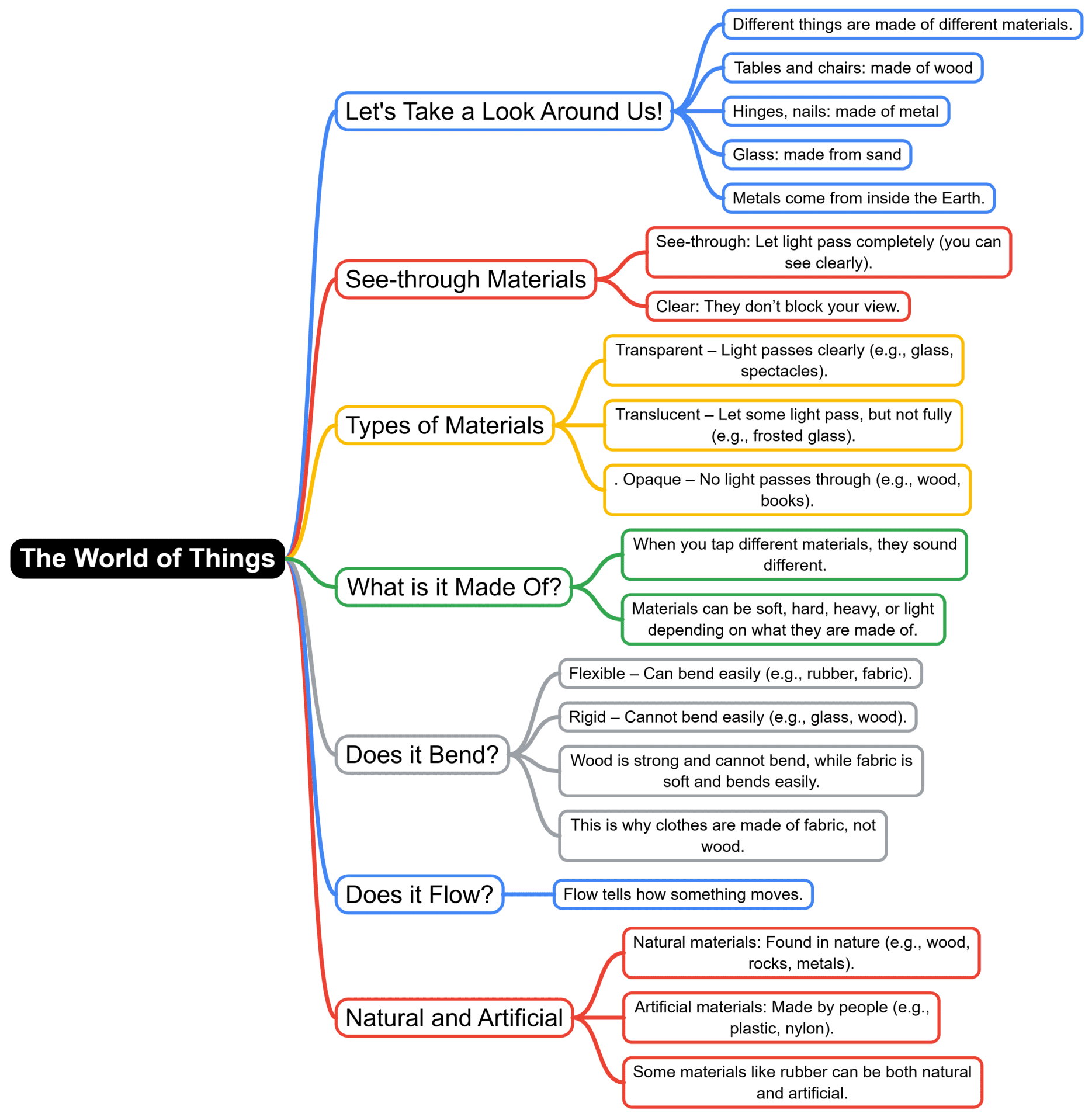Class 3 Exam > Class 3 Notes > EVS Class 3: The World around us (Our Wondrous World) > Mind Map : The World of Things
Mind Map : The World of Things | EVS Class 3: The World around us (Our Wondrous World) PDF Download

The document Mind Map : The World of Things | EVS Class 3: The World around us (Our Wondrous World) is a part of the Class 3 Course EVS Class 3: The World around us (Our Wondrous World).
All you need of Class 3 at this link: Class 3
|
30 videos|128 docs|14 tests
|
FAQs on Mind Map : The World of Things - EVS Class 3: The World around us (Our Wondrous World)
| 1. What are the different categories of things we encounter in everyday life? |  |
Ans. In our everyday life, things can be categorized into various groups such as natural things, which include plants and animals, and man-made things, which are products created by humans like toys and furniture. Additionally, we can classify things based on their uses, such as tools, clothing, or vehicles, and their properties, such as solid, liquid, or gas.
| 2. How do objects around us impact our daily activities? |  |
Ans. Objects around us play a significant role in our daily activities by providing us with the necessary tools and resources for various tasks. For instance, kitchen items like pots and pans help us prepare meals, while educational tools like books and computers facilitate learning. The presence of comfortable furniture enhances our relaxation and productivity at home and school.
| 3. What is the importance of understanding the materials that make up different objects? |  |
Ans. Understanding the materials that make up different objects is important because it helps us appreciate their properties and uses. For example, knowing that glass is fragile can remind us to handle it carefully, while understanding that metals are strong can inform us why they are used for construction. This knowledge also guides us in making informed choices about recycling and sustainability.
| 4. How can we differentiate between living and non-living things? |  |
Ans. Living things are characterized by their ability to grow, reproduce, respond to the environment, and carry out life processes such as respiration and nutrition. In contrast, non-living things do not exhibit these characteristics. For example, a tree is a living thing because it grows and produces seeds, while a rock is a non-living thing as it does not show any signs of life.
| 5. Why is it essential to learn about the world of things at an early age? |  |
Ans. Learning about the world of things at an early age is essential because it helps children develop observational skills, critical thinking, and an understanding of their environment. This knowledge fosters curiosity and encourages exploration, which is vital for their overall cognitive development. Additionally, it lays the foundation for responsible citizenship by promoting awareness of environmental and sustainability issues.
Related Searches
















